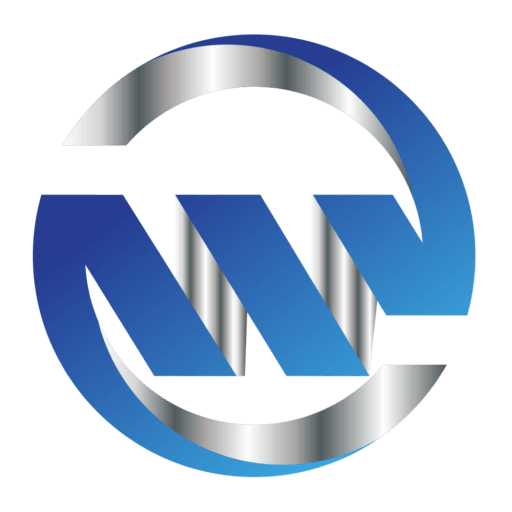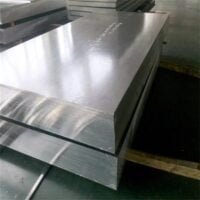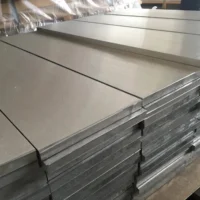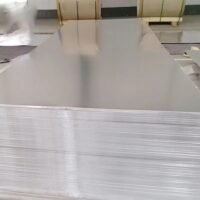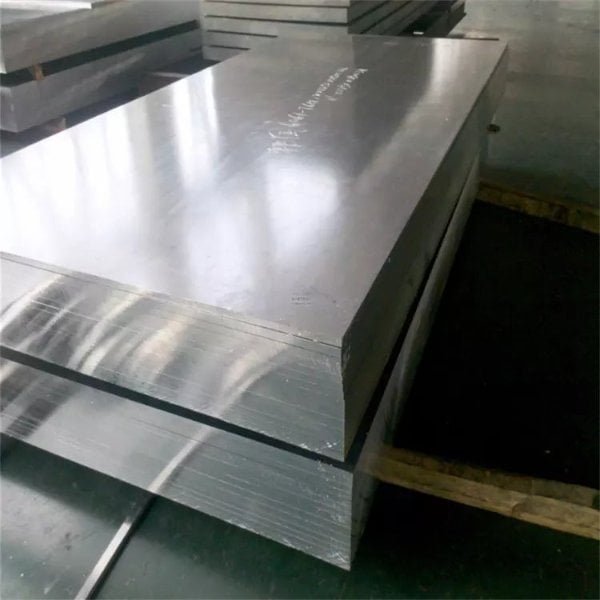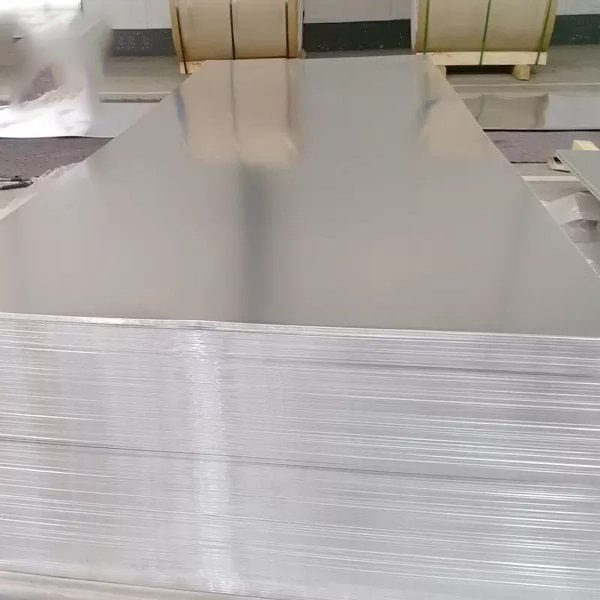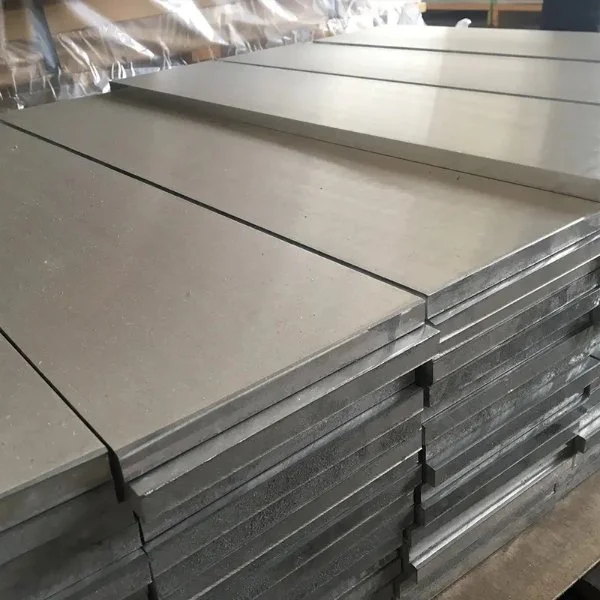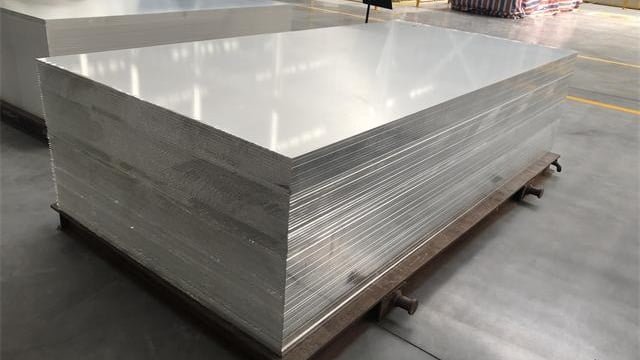3105 Aluminum Sheet
3105 Alloy Aluminum Sheet
Application Market: Room Partition, Aluminum Base Material For Color Coating, Tank Body, Lamp Holder Material, Blinds, Bottle Caps, Bottle Stoppers, Wine Caps, Beverage Caps, Cosmetic Caps, Coating Rolls, etc.
| Width: 40-2650mm | ||
| Thickness: 0.2-500mm | ||
| Length: 500-16000mm | ||
| Temper: O, H12, H14, H16, H18, H22, H24, H26, H28, H111, H112, H114, etc. | ||
| Sample Size: A4 Paper Size | ||
| MOQ: 1 -3T | ||
| Payment Terms: T/T, L/C, D/P | ||
| Delivery Time: Normally Within 15-30Days |
3105 aluminum plate is a kind of high-strength lightweight metal material composed of aluminum as the main component, supplemented by a small amount of magnesium, manganese, and other alloying elements. This alloy aluminum sheet goes through specific melting, casting, rolling, and heat treatment processes, giving it unique physical and chemical properties. It not only has the general advantages of aluminum alloys, such as lightweight, high strength, good corrosion resistance, and good electrical and thermal conductivity but also has some unique physical and chemical properties, making it more advantageous in specific application scenarios. Therefore, it has been widely used in many modern industrial and civil fields.
classification
Classification by alloy composition
- Standard 3105 aluminum alloy plate: It mainly contains aluminum, magnesium, manganese, and other elements, and has standard strength and ductility.
- Improved 3105 aluminum alloy plate: Based on the standard 3105 aluminum alloy, adjusting the content of alloying elements or adding other alloying elements to improve some of its properties, such as increasing strength, increasing corrosion resistance, or optimizing processing performance. The modified 3105 aluminum alloy plate can be customized to meet the requirements of different application scenarios.
classification by use
- 3105 aluminum alloy plate for construction: mainly used in the manufacture of doors and Windows, curtain walls, partition walls and other building components, with excellent corrosion resistance and decoration.
- 3105 aluminum alloy plate for transportation: used in the manufacturing of automobiles, ships, aircraft, and other vehicles, with the main goal of reducing weight and improving energy efficiency.
- 3105 aluminum alloy plate for electrical and electronic: mainly used in the manufacture of heat sinks, shells, brackets, and other components, requiring good thermal and electrical conductivity.
Classified by surface treatment
Standard surface treatment
- Primary color 3105 aluminum alloy plate: without additional surface treatment, the aluminum alloy plate retains the natural color and texture of the metal.
- Anodizing: Through electrochemical treatment, an oxide film is formed on the surface of the aluminum alloy to enhance its corrosion resistance, hardness, and wear resistance.
- Spraying: Spraying polyester, fluorocarbon, and other coatings on the surface of aluminum alloy to increase its beauty and durability.
- Electrophoretic coating: Through electrophoretic technology, a uniform and dense coating is formed on the surface of aluminum alloy with good corrosion resistance.
Special treatment of modified 3105 aluminum sheets
- Laser surface treatment: Using laser technology, the surface of the improved 3105 aluminum alloy plate is treated at micro and nano levels to further improve its corrosion resistance, wear resistance, and surface hardness.
- Chemical coating: A layer of chemical coating, such as nickel-phosphorus coating, is formed on the surface of the improved 3105 aluminum alloy plate to improve its wear resistance and corrosion resistance.
- Vacuum coating: In a vacuum environment, through physical evaporation or sputtering, a layer of metal or non-metal film is formed on the surface of the improved 3105 aluminum alloy plate to increase its aesthetics and functionality.
Through the special surface treatment, the modified 3105 aluminum alloy plate not only improves its physical and chemical properties but also further expands its application range in different fields.
Chemical composition and microstructure
The chemical composition of the 3105 aluminum alloy plate mainly includes aluminum (Al), magnesium (Mg), and a small amount of silicon (Si), iron (Fe), and other elements. This alloying design gives it excellent physical and mechanical properties. Its microstructure is a fine grain structure, which makes the alloy plate still have good plasticity and toughness while maintaining high strength.
Excellent mechanical properties
Tensile strength: The tensile strength of 3105 aluminum alloy plates is usually between 120 and 240 MPa, depending on its thickness, treatment process and microstructure. This level of strength is sufficient to meet the requirements of most structural components.
Yield strength: Its yield strength is usually in the range of 80-180 MPa, which means it can maintain good stability when subjected to external forces. 3105 aluminum plate can absorb much energy without obvious deformation, effectively resisting deformation and fracture.
Elongation: The elongation of 3105 aluminum alloy plate is usually between 10%-25%, which means that when subjected to external force, it can absorb more energy, to protect the structure from damage so that it has good plastic deformation ability, suitable for a variety of complex forming processes.
Good corrosion resistance
The 3105-grade alloy aluminum sheet is covered with a dense aluminum oxide protective film, making it naturally corrosion-resistant. Anodic oxidation, electrophoresis paint, and other special surface treatment technology further enhance its ability to resist corrosion and prolong service life. Whether in a humid Marine environment or a dry desert area, this alloy plate can maintain stability for a long time and is not susceptible to corrosion.
Excellent processing properties
The alloy aluminum sheet 3105 is easy to cut, bend, press, and weld, making it highly flexible in the manufacturing process to meet various complex manufacturing needs. Whether it is simple straight-line cutting or complex curve forming, this alloy plate can meet the processing requirements. At the same time, its welding performance is also very good to ensure the overall strength and tightness of the structure.
Good electromagnetic shielding performance
With the popularity of electronic products, the electromagnetic radiation problem has received increasing attention. The 3105 aluminum plate has good electromagnetic shielding performance as a metal conductor. It can effectively block the interference of electromagnetic waves and protect the surrounding environment and human health. This feature allows it to have a wide range of applications in the field of electronic packaging.
High thermal stability
Under a high-temperature environment, 3105 aluminum alloy can maintain high strength and stability and is not easy to deform or fail. This gives it a unique advantage in high-temperature working environments such as aerospace.
Environmental sustainability
3105 aluminum alloy, as a recyclable material, has a high environmental protection value. 3105 aluminum plates also pay attention to environmental protection and sustainable development in the production process, in line with the needs of modern industry for green materials.
In summary, the 3105 aluminum alloy plate, with its excellent mechanical properties, good corrosion resistance, excellent processing performance, good electromagnetic shielding performance, high thermal stability, environmental protection, and sustainable characteristics, has become an ideal lightweight high-strength material. In the future of industrial development, it will continue to play an important role in promoting technological progress and innovative development in various fields.
Data sources:
- Aluminum Alloy Materials and Applications Manual
- ASM International: “Aluminum Alloys: Properties and Applications”
- Journal of Materials Science & Technology
- Aluminum Association: “Aluminum Standards and Data”
Chemical composition and microstructure
The chemical composition of the 3105 aluminum alloy plate mainly includes aluminum (Al), magnesium (Mg), and a small amount of silicon (Si), iron (Fe), and other elements. This alloying design gives it excellent physical and mechanical properties. Its microstructure is a fine grain structure, which makes the alloy plate still have good plasticity and toughness while maintaining high strength.
Excellent mechanical properties
- Tensile strength: The tensile strength of 3105 aluminum alloy plates is usually between 120 and 240 MPa, depending on its thickness, treatment process, and microstructure. This level of strength is sufficient to meet the requirements of most structural components.
- Yield strength: Its yield strength is usually in the range of 80-180 MPa, which means it can maintain good stability when subjected to external forces. 3105 aluminum plate can absorb much energy without obvious deformation, effectively resisting deformation and fracture.
- Elongation: The elongation of 3105 aluminum alloy plate is usually between 10%-25%, which means that when subjected to external force, it can absorb more energy, to protect the structure from damage so that it has good plastic deformation ability, suitable for a variety of complex forming processes.
Advanced Color-Coated Process
Polyester-coated pre-coating Technology(PE)
Polyester coating is a kind of anti-UV UV polyester resin coating, its main component is using polymer containing ester bonds in the main chain as a monomer, adding alkyd resin, and ultraviolet absorber. After baking polyester coating on the surface of aluminum (aluminum sheet, aluminum roll) many times, it forms a solid film with protection and decoration. The polyester coating protects color-coated aluminum products (aluminum sheets, aluminum rolls) from exposure to the atmosphere due to temperature differences, freeze-thaw cycles, corrosive gases and microorganisms, and from ultraviolet radiation, wind, rain, frost, and snow.
In addition, the polyester coating can give color-coated aluminum substrate products rich color, according to gloss polyester coating can be divided into matte and highlight series. Therefore, the color-coated aluminum coil not only has good gloss and smoothness, but also has superior texture and feel, and can also increase the sense of layer and three-dimensional. It is especially suitable for interior decoration and advertising boards.
polyvinylidene difluoride coating technology(PVDF)
Fluorocarbon coating is PVDF resin, mainly refers to vinylidene fluoride homopolymer or vinylidene fluoride and other small amounts of fluorinated vinyl monomer copolymer coatings. The fluoric acid-base material with fluorine/carbonization bond has a stable and firm chemical structure, which makes the physical properties of fluorocarbon coatings different from those of general coatings.
Fluorocarbon coatings can be divided into traditional fluorocarbon coatings and nano-fluorocarbon coatings according to the film formation structure of the surface. In 1965, the Pennwalt Chemical Company of the United States for the first time used fluorocarbon paint for the coating of indoor and outdoor aluminum in high-grade buildings, a wide range of color selectivity, solemn appearance, and durability for many magnificent curtain wall buildings around the world added luster. In addition to the wear and impact resistance in terms of mechanical properties, it also shows excellent and long-term fading resistance and UV resistance in harsh climates and humid environments. After high-temperature grilling, the molecular structure of the coating is tight, and the machine has superior weather resistance. The coating manufacturer’s guarantee of the service life of the coating began to be 10 years, 15 years to guarantee more than 20 years.
American research institutions have tested and compared fluorocarbon coatings super coatings and general coatings. The samples of the coatings were exposed to hot sunlight in Florida, the United States, and exposed to the harsh environment of humid salty air for 12 years, which proves that the stability and durability of fluorocarbon coatings are 30%-80% higher than those of the other two coatings. Fluorocarbon coatings ensure that they can be used in various harsh environments. It is especially suitable for indoor and outdoor decoration in public places, commercial chains, exhibition advertising, and other decorations and displays.
3105 aluminum alloy application field introduction
3105 aluminum alloy plate as a high quality lightweight high strength metal material, because of its unique physical and chemical properties, has been widely used in many fields. The following is a detailed introduction to the main application areas of 3105 aluminum alloy plates.
aerospace field
In the aerospace field, 3105 aluminum alloy plates are favored for their lightweight, high strength and good thermal stability. It is often used to manufacture structural components of aircraft and spacecraft, such as fuselage skins, wing spars, frames, etc. Its high strength and excellent thermal stability allow these components to maintain structural integrity and stability under extreme climatic conditions.
Transportation field
In the field of transportation, 3105 aluminum alloy plates are widely used in the manufacturing of cars, trains and ships because of their light weight, corrosion resistance and good processing properties. It can replace traditional steel and reduce the weight of the car body, thereby improving fuel efficiency and driving speed. In addition, its good corrosion resistance can also extend the service life of the car body.
Architectural decoration field
3105 aluminum alloy plates are also widely used in the field of architectural decoration. It can be used to make aluminum doors and Windows, curtain walls, ceilings and so on. Its beautiful appearance, good corrosion resistance and easy workability make it an ideal building decoration material. In addition, aluminum alloy materials can also be recycled, in line with the environmental protection concept of modern society.
Electronic packaging field
With the popularity of electronic products, the demand for electronic packaging materials is also increasing. 3105 aluminum alloy plate has been widely used in the field of electronic packaging because of its good electromagnetic shielding performance, high thermal conductivity and easy processing. It can be used to make electronic equipment shell, heat sink, and other components, to protect electronic equipment from electromagnetic interference, while improving the heat dissipation efficiency of the equipment.
Packaging and container manufacturing
3105 aluminum alloy plates are also widely used in packaging and container manufacturing because of their good ductility, corrosion resistance and recyclability. It can be used to make a variety of aluminum cans, beverage bottles, food packaging and so on. Its good corrosion resistance can protect the contents from corrosion, while its recyclability also meets environmental requirements.
In summary, the 3105 aluminum alloy plate because of its unique physical and chemical properties, in aerospace, transportation, architectural decoration, electronic packaging and packaging container manufacturing and other fields has been widely used. With the progress of science and technology and the improvement of environmental protection requirements, the application prospect of 3105 aluminum alloy plates will be broader.
data sources:
- ASM International: “Aluminum Alloys: Properties and Applications”
- Journal of Materials Science & Technology
- Aluminum Association: “Aluminum Standards and Data”
- International Journal of Lightweight Materials and Manufacture
The price of 3105 aluminum plate = aluminum ingot price + processing fee.
Note: 3105 aluminum plate has different tempers and specifications, the quotations of each aluminum plate manufacturer are also different. For a detailed quotation, free online consultation is available, we are very happy to provide you with support and help!
Interested In Working With WANTAI?
Please insert your contact information into the following contact form and let us know how we can help you! We will contact you as quickly as possible.
